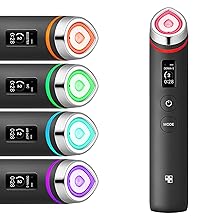
Patients tapping into alternative care options, but N.S. emergency departments still face challenges
CBC
More Nova Scotians than ever are arriving at hospital emergency departments with conditions rated in the most serious categories, a development experts say is highlighting how the health-care system is changing.
Officials say it indicates two diverging trends. The province has a large population of aging patients with complex, chronic illnesses who may avoid hospital until they are in dire condition. And other patients who are less ill are finding alternatives, including online appointments or talking to a pharmacist, rather than visiting an emergency department.
When a patient presents at an emergency department, they're screened and assigned a triage level between one and five, with triage scores of one and two considered the sickest patients and four and five considered less serious conditions that, in theory, could be treated elsewhere.
Numbers from Nova Scotia Health last month show that, through September, the percentage of people at emergency departments with triage scores one and two has increased every year since 2016.
Conversely, the percentage of patients with triage scores four and five has declined each year since 2016, with a notable drop in the last year.
"I don't think it was ever really an issue of trying to convince folks not to come to an emergency department," Dr. Matthew Clarke said during a recent interview at the Halifax Infirmary. He is an emergency room doctor and associate chief medical information officer at the Nova Scotia Health Authority.
"I just think there really weren't other options. I think we've created capacity in other avenues."
More than 146,000 people in the province are without a primary care provider and it's become common for people to spend hours at an emergency department waiting to see someone because there was nowhere else for them to get care, no matter how minor their need.
The provincial government has attempted to change that in recent years with expanded access to virtual care and the creation of mobile primary care clinics that visit communities around the province and primary-care clinics in pharmacies using pharmacists.
Tara Sampalli, a senior scientific director with Nova Scotia Health, said people with mild conditions could often get the treatment they need from primary care, if they had access.
With the number of people using virtual care and clinic options rising by the thousands, Sampalli said these new avenues seem to be accomplishing the goal of giving those patients a path to care somewhere other than the emergency department. People who use them are asked what they'd have done if virtual care or the mobile and pharmacy clinics were not available.
"And many people — over 50 per cent — [say] they would have gone to the emergency department in their local community," Sampalli said in a recent interview.
Along with these new options, Clarke thinks there are additional reasons to explain the growing percentage of patients with more acute triage scores.

This trucking association is calling City of Thunder Bay 's designated route a major 'trade barrier'
The Ontario Trucking Association is calling on the province to intervene after Thunder Bay city council approved a new truck route bylaw that will restrict most transport trucks from using Dawson Road and Highway 102.

As Alberta's transportation minister prepares to unveil a passenger rail strategy this summer, freedom of information documents obtained by CBC News show that Premier Danielle Smith's husband, David Moretta, was invited to three meetings in 2023 about passenger rail and its potential expansion in the province.





















 Run 3 Space | Play Space Running Game
Run 3 Space | Play Space Running Game Traffic Jam 3D | Online Racing Game
Traffic Jam 3D | Online Racing Game Duck Hunt | Play Old Classic Game
Duck Hunt | Play Old Classic Game









